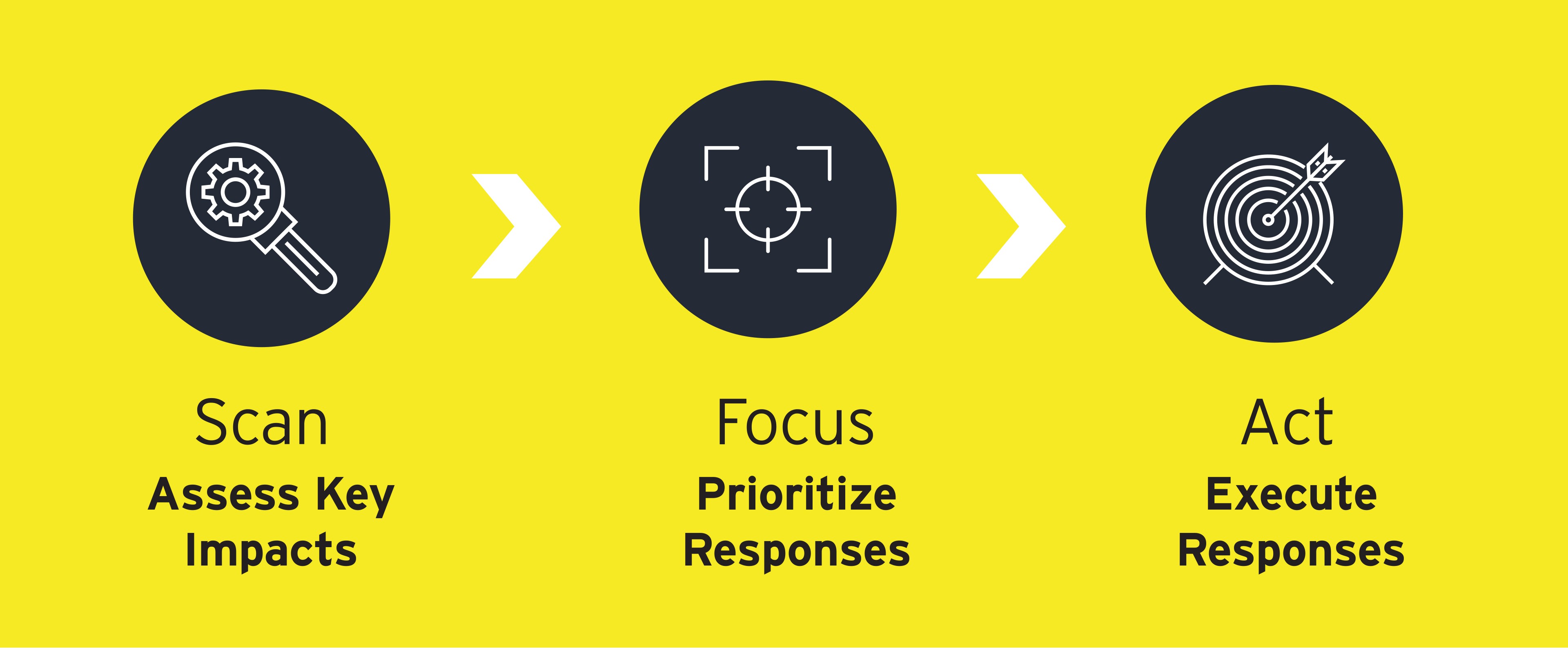Seven key COVID-19 response recommendations
Businesses will be judged in real time on how they manage the challenge, their behavior and strategic choices. An informed response could build trust and brand affinity, whereas poor decisions will pose a real reputational risk.
1. Build a trusted team
Bring together a crisis management team of key decision-makers, including but not limited to: leadership and strategy, operations, human resources, communications and corporate affairs, legal and risk. Empower the team to make and implement decisions quickly.
2. Review the current plans and capability
Perform an immediate review of any existing or activated business continuity or contingency plans. The situation is fluid and rapidly evolving, therefore internal and external assumptions will have moved on — plans will have to be refreshed and capability gaps bridged.
3. Utilize timely intelligence
Maintain situational awareness by gathering up-to-date and accurate information from trusted official sources and experts. Cascade the business-relevant facts to your teams and encourage them to not get distracted by media panic.
4. Operate a deliberate response to an agreed rhythm
Ensure your business response operates at a pace determined by the leadership:
- Avoid waiting for new decisions or actions to be dictated by outside factors
- Limit abrupt localized decision-making
5. Understand exposure to third party risks and impacts
Assess the reliance on third parties in your network, their vulnerability to failure and potential viability impacts. If possible, extend this risk review to their supplier networks. These factors may have commercial implications such as contractual liability for unforeseen costs, delay penalties or termination risk, insurance cover which include any limitations or exclusions, force majeure and hardship clauses.
6. Communicate and engage staff, suppliers and customers
- Engage staff in a consistent dialogue about actions you are taking to protect and support them
- Engage with suppliers to properly pinpoint the most material risk exposures and jointly define mitigations
- Keep customers and wider external stakeholder groups informed and promote confidence in your business resilience through clear and consistent messaging
7. Establish or reinforce your crisis response process
Ensure that all functions, sites or countries in your network know the firm-wide approach to crisis management and the response protocols. Advise teams on who holds the mandate for decision making and communications at leadership and local levels, given the need to potentially act at a much quicker pace than is usually expected.
How can businesses better equip themselves to be more resilient to major disruptive events or rapidly evolving crises?
Further epidemics or major health emergencies are a given — indeed, there are likely to be additional phases of the current COVID-19 pandemic. A business continuity plan is therefore a basic requirement as well as an evolving resilience strategy.
To effectively build a resilient business, companies need to focus on certain key capabilities. This framework can be applied across all aspects of the business operating model or parameters, but specifically for people and physical supply chains.




